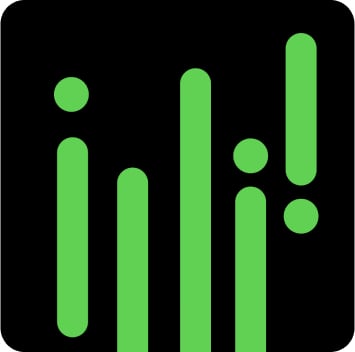Money Matters
MTD for Income Tax: What Making Tax Digital means for sole traders
MTD for Income Tax starts in April 2026. Learn about the requirements and rules, and discover what you have to do to get ready in time.

Making Tax Digital (MTD) is the UK government’s flagship programme to make it easier for businesses and individuals such as sole traders to get their tax right.
As you might guess from the name, it does this by legislating the digitalisation of recording tax data and submission.
The next legislation to come into effect will be MTD for Income Tax. In this article, we answer questions that you, as a sole trader, may have around this, and what it means for your business finances.
Here’s what we cover:
- What is Making Tax Digital for Income Tax?
- What are the benefits of MTD for Income Tax?
- What are the latest developments around MTD for Income Tax?
- What is the MTD for Income Tax timeline?
- Who will be affected by MTD for Income Tax?
- What are the MTD for Income Tax rules for self-employed sole traders?
- How to prepare for MTD for Income Tax with 4 simple tips
- MTD for Income Tax: Self-employed and sole trader FAQs
What is Making Tax Digital for Income Tax?
Making Tax Digital for Income Tax Self Assessment (often shortened to Making Tax Digital for Income Tax, or MTD for ITSA) is new legislation that will come into effect in April 2026 for businesses, self-employed individuals, and landlords with income over £50,000, and in April 2027 for those earning over £30,000.
In fact, it’ll end the need to submit annual tax returns altogether.
Making Tax Digital for VAT software
Discover how Sage Accounting can help you get your MTD for VAT submission right, calculate your bill and submit your VAT Return with ease.

What are the benefits of MTD for Income Tax?
As a sole trader, you’ll find that MTD for Income Tax will make it much easier to keep on top of your tax obligations.
By using MTD-compatible software, you’ll get benefits beyond simplifying basic accounting tasks.
Leading solutions give you:
- The ability to keep digital records and submit tax returns digitally, reducing human error.
- More visibility of cash flow.
- More awareness of how much tax you owe, so you can avoid setting aside more money than you need to and vice versa.
- Access to technologies such as artificial intelligence (AI) to automate tasks, which means less time on admin and more doing what you love.
- An understanding of your financial position and performance any time, so you can make smarter decisions faster.
- The ability to spot accounting mistakes sooner with more regular checking of data.
- Better collaboration by connecting software to your accountant’s system.
- The ability to easily capture and digitise receipts using mobile apps.
What are the latest developments around MTD for Income Tax?
In HMRC’s most recent update for MTD for Income Tax, published on 19 December 2022, it was confirmed that the legislation would be pushed back from April 2024, now launching in two phases in April 2026 and April 2027.
The statement confirms that:
- MTD for ITSA will be introduced in two phases. Sole traders and landlords earning over £50,000 will be mandated from April 2026, followed by those earning over £30,000 from April 2027.
Following the phased approach, the government will not extend MTD for ITSA to general partnerships in 2025, but says it’s committed to introducing this at a later date.
The statement mentions no change to plans to reform basis period rules, which are set to take place from April 2024, with a transitional year coming into effect in April 2023.
What is the MTD for Income Tax timeline?
MTD for Income Tax will be introduced from April 2026, for sole traders and landlords with gross income over £50,000. From April 2027, the threshold lowers to those earning over £30,000.
All businesses in existence immediately before April 2026 will have to follow the new legislation, regardless of their accounting period end, when it comes into force.
There are no confirmed plans for when MTD for Income Tax will apply to general partnerships.
When does MTD for Income Tax start for sole traders?
Sole traders earning over £50,000 will have a ‘digital start date’ of 6 April 2026, and those earning over £30,000 will start the following year.
In fact, the digital start dates will always be 6 April (which will be relevant for sole traders and landlords who have to follow MTD for Income Tax beyond 2026).
Who will be affected by MTD for Income Tax?
MTD for Income Tax will change how millions of individuals including sole traders, landlords and eventually partners of partnerships handle their taxes
However, it’ll only apply those who have income above £50,000 (then later, £30,000) across their businesses or properties. If your income from these sources is below the thresholds, you have the option to continue using the existing Self Assessment system.
This threshold applies to gross income or turnover, not profit, and applies to the total gross income if you have more than one trade or property business.
You won’t be required to follow the MTD for Income Tax rules if any of the following apply:
- It’s not reasonably practicable for you to use digital tools to keep business records or submit quarterly returns due to age, disability, remoteness of location or any other reason (often referred to as ‘digital exclusion’).
- You are subject to an insolvency procedure.
- Your business is run entirely by practising members of a religious society or order whose beliefs are incompatible with using electronic communications or keeping electronic records.
If any of the above apply, you’ll need to apply to HMRC to claim an exemption, with HMRC having 28 days to either grant or deny the application.
Other exemptions from MTD for Income Tax include these groups:
- Trusts
- Estates
- Trustees of registered pension schemes
- Non-resident companies.
Am I a sole trader?
If you run your own business as an individual i.e. not through a company and work for yourself, you are a sole trader, and are entitled to keep all profits after tax.
If you make more than the trading allowance of £1,000, you’ll need to pay taxes and National Insurance.
To do this, you must register with HMRC to use the Self Assessment tax system and file an annual Self Assessment tax return, which shows how much you’ve earned, and how much you’re claiming as allowable expenses and what tax is therefore payable.
Making Tax Digital for Income Tax will replace this system for any sole traders who fall within its scope.
Making Tax Digital for VAT software
Discover how Sage Accounting can help you get your MTD for VAT submission right, calculate your bill and submit your VAT Return with ease.

What are the MTD for Income Tax rules for self-employed sole traders?
This is what we know so far about the MTD for Income Tax Self Assessment requirements, based on the pilot scheme and pending legislation being published by the government.
MTD for Income Tax scope
For the first phase, the majority of self-employed sole traders whose business income is above £50,000 will be required to use compatible software for their income tax accounting for the first full accounting period starting on or after 6 April 2026.
Similarly, if you were to make £45,000 income from your sole trader business and £6,000 from rental income on property you own, you’d need to follow the MTD for Income Tax rules.
Digital record keeping requirements
Eligible businesses and landlords will be required by law to keep digital records of all income and expenses using MTD-compatible software.
Those that aren’t doing this already will need to purchase or acquire a free version of software in order to comply.
HMRC has been working with the software industry to ensure that businesses needing to update their accounting systems will have access to affordable software products.
The government has also committed to there being free software products for the smallest businesses with straightforward affairs.
Self Assessment changes
For each of your businesses, you’ll need to submit updates at least quarterly (or more frequently if desired), and an end of period statement (EOPS).
By 31 January each year, you’ll need to submit a single final declaration for all income.
While this may sound like a lot of documentation, compatible accounting software will automate these tasks and you’ll do less admin work than under the traditional Self Assessment process.
Quarterly update requirements
Under the MTD for Income Tax rules, an update for each business you own must be sent to HMRC via software every three months (or more frequently if you choose to).
These quarterly updates should follow the tax year rather than the accounting year end of your business (unless that happens to be the same).
At a later date, HMRC will give you the option to use calendar quarters instead of these standardised ones.
You’ll also need to send a quarterly update for any rental income from property that you own. This gives you a more up-to-date estimate of how much tax you owe.
But this will only be based on the information you provide, so won’t take into account any adjustments that you make at the year-end for assets or reliefs.
Since the updates don’t include a declaration from you, there aren’t any penalties for inaccuracy.
End of period statement (EOPS) requirements
At the end of each tax year, you’ll need to make an EOPS for each business that you own, and also an EOPS for income from property (if you have any) that includes any adjustments that are needed.
This is similar to the current process for the SA103 and SA105 schedules.
Notably, the EOPS applies to each business you run, rather than the individual, so you may find yourself submitting several.
It’s likely that if you use an accountant or tax adviser, they’ll support with this to help you take advantage of any allowances and tax reliefs that can be claimed.
They’ll also support you with any complex calculations such as accounting for leases, assets, R&D, etc.
Final declaration each year
By 31 January following the end of the tax year, you need to ‘crystallise’ your income tax.
This means you’ll need to use software to view the final income tax estimate calculated by HMRC, which includes details of all the income, expenses and allowances you’ve told it about.
Your accountant might make corrections or adjustments at this point too.
You’ll then need to legally declare – via the final declaration – that you’ve provided HMRC with all the information it requested and that you agree with its income tax calculation.
This final declaration brings together all information on your sole trader businesses and properties provided via the quarterly updates and EOPS, as well as information on other sources of income that fall outside of MTD, such as dividends and interest.
The final declaration applies to individuals, and not to individual businesses and/or property income, so you’ll only submit one each tax year.
How to prepare for MTD for Income Tax with 4 simple tips
Although the first phase of MTD for Income Tax will not start until 2026, getting prepared early will bring you the benefits of digitalising your tax sooner.
Here are four tips to help you get started:
1. Work out if MTD for Income Tax will apply to you
It’s simple to work out, as mentioned above: take your income from any sole trader business(es), plus any rental income from property you own.
If this is above £50,000, you’ll need to register for and comply with MTD for Income Tax from April 2026. If it’s below £50,000 but above £30,000, you’ll need to comply from April 2027.
2. If you have more than one business, adjust the accounting periods so they all align with standardised reporting dates
This will make submitting quarterly updates much more efficient, as you can action them all in one fell swoop, in line with HMRC requirements.
Speak to your accountant if you need help doing this.
3. Look at your business admin. How much of it is compatible with MTD for Income Tax’s requirements?
For example, how much paperwork do you continue to rely upon?
Even spreadsheets might present issues when it comes to MTD for Income Tax – think deleting entries accidentally, mistyping, overwriting the contents of a cell, plus the need to make those quarterly updates, EOPS and final declarations.
4. Start your digitalisation process as soon as possible
To avoid admin overload, aim to be up and running with your new accounting solution well ahead of MTD for Income Tax coming into force.
Doing so will put you in the best position to firmly establish new working practices.
In addition, speak to your accountant, if you have one, to get advice and see what changes they’re planning and implementing.
If you use cloud accounting software, you almost certainly already meet the required criteria for digital record-keeping – and feature updates for EOPS and the final declaration are likely to arrive well in time for the MTD for Income Tax mandation date.
If so, it’s possible all you’ll need to do for the 2026/27 tax year is use the features that exist within your accounting software.
However, if you use spreadsheets, paper or a desktop accounting software package for your accounting, you’ll need to start making preparations earlier.
Making Tax Digital for VAT software
Discover how Sage Accounting can help you get your MTD for VAT submission right, calculate your bill and submit your VAT Return with ease.

MTD for Income Tax: Self-employed and sole trader FAQs
Will a sole trader still be able to file paper Self Assessment returns under MTD for Income Tax?
If your income is below £30,000, MTD for Income Tax won’t apply to you and you’ll be able to continue filing your Self Assessment return in the same way as usual.
Those wishing to become digitally exempt for what HMRC considers legitimate reasons will have to apply to HMRC directly and explain why.
Can a sole trader still handwrite or print invoices under MTD for Income Tax?
Yes, you can still create paperwork.
But the data will either have to already be in your digital accounting records (e.g. you’re printing an invoice for posting out from within your accounting software), or you’ll need to transfer the details to your digital accounting records as soon as possible.
Using a modern accounting software solution will ensure your accounting records are being kept digitally in any event, even if you or your clients/customers still have a need for paperwork.
Can a sole trader use spreadsheets for MTD for Income Tax?
MTD for Income Tax requires you to make quarterly updates, EOPS and a final declaration digitally. It’s hard to see how this can be achieved in a user-friendly way with a spreadsheet.
Though spreadsheets are handy tools, they have limitations.
For example, you must keep your accounting records for at least five years, and it’s easy to accidentally delete a spreadsheet file or overwrite its contents.
If you do this with a spreadsheet containing your historic MTD for Income Tax accounting, you could be liable for a fine.
There are also issues around what HMRC calls digital linking, which is where your accounting data is digitally linked so the information is automatically transferred between systems.
As was the case with MTD for VAT, it’s expected that manually copying and pasting data from one place to another will not be allowed and could result in a penalty.
What software does a sole trader need for MTD for Income Tax?
You’ll need to use MTD for Income Tax-compatible software to store digital records, send the required information to HMRC, view HMRC’s estimate of the final tax bill, and send a final declaration to ‘crystallise’ your income tax.
According to TechRadar: “The best route to take for making the whole tax filing process even easier is to select a comprehensive accounting solution” – and it’s chosen Sage Accounting as the ideal choice.
Most cloud-based small business accounting software will be updated in time for MTD for Income Tax. If you use desktop software, you’ll need to ensure it’s updated in time, or investigate how to integrate it with bridging software.
You may find some older software simply won’t be updated, so you might need to change to a newer package or software provider.
Allow time for this to take place well ahead of the April 2026 implementation date.
If you use a spreadsheet for your accounting, see “Can a sole trader use spreadsheets for MTD for Income Tax?” above.
If a sole trader has already registered for MTD for VAT, do they need to register for MTD for Income Tax?
Yes. Even though both schemes require you to send information digitally to HMRC, they are still separate, requiring their own sign ups and different approaches.
Can my accountant sign my sole trader business up for MTD for Income Tax?
Yes. You should speak to them about this well ahead of time.
An accountant will be able to submit quarterly updates, EOPS and a final declaration on your behalf, and will check with you first to ensure all details are correct.
Even though the accountant handles these for you, you must use software for your accounting, and keep your accounting relating to sole trader income digitally.
Can a sole trader opt-out of MTD for Income Tax?
No, MTD for Income Tax is not optional if you fall within its scope (that is, you’re a sole trader and/or landlord with an income over £50,000 in 2026, or over £30,000 in 2027).
But it’s possible to apply to be digitally excluded if you have a good reason – see “Will a sole trader still be able to file paper Self Assessment returns under MTD for Income Tax?” above.
Can a sole trader deregister from MTD for Income Tax?
Yes. If a taxpayer’s turnover/gross income falls below the two thresholds, they can stop complying with requirements.
To avoid having to exit and re-join if their turnover fluctuates, the requirements only stop applying after three consecutive years of income dropping below the threshold. Taxpayers can also stop complying if their business permanently ceases.
Editor’s note: This article was first published in August 2021 and has been updated for relevance, following the delay to Making Tax Digital for Income Tax.
A guide to Making Tax Digital for Income Tax
Need help to get your business ready for Making Tax Digital? Download this free guide to learn about MTD for Income Tax and get prepared now.








I am Bookkeeper using Sage 50 Cloud Accounts. I already submit VAT returns through MTD. When will MTD for SA become available in this software. I would like to get clients on board with this by April 2022 if I can to get them used to handing over their paperwork quarterly instead of at the last minute once a year before it is mandatory.
Thank you
On page 11 of ‘Download your free Small Business Toolkit’ there is a link to download a free cash flow forecast template; it doesn’t work, there is a 404 error:
404 – Not found or no permission to access
The resource you are looking for has been removed, had its name changed, or is temporarily unavailable. Please retry your action. If the problem persists and there is no workaround, please log into My Oracle Support and submit a case or call 1-800-223-1711 for technical support.
We apologize for the inconvenience.
How do I get a copy of the template, I would like to have a look to see if it is of use to us?
Hi Charlotte,
Thanks for spotting this, we’ll get the guide updated to include the correct information.
In the meantime, when you entered your details on the small business toolkit form and clicked ‘submit’, a zip file should have been downloaded to your device.
In the file, you’ll find the cash flow forecast template, along with a business plan template and the small business survival guide.
Hope that helps.
Thanks, Stacey